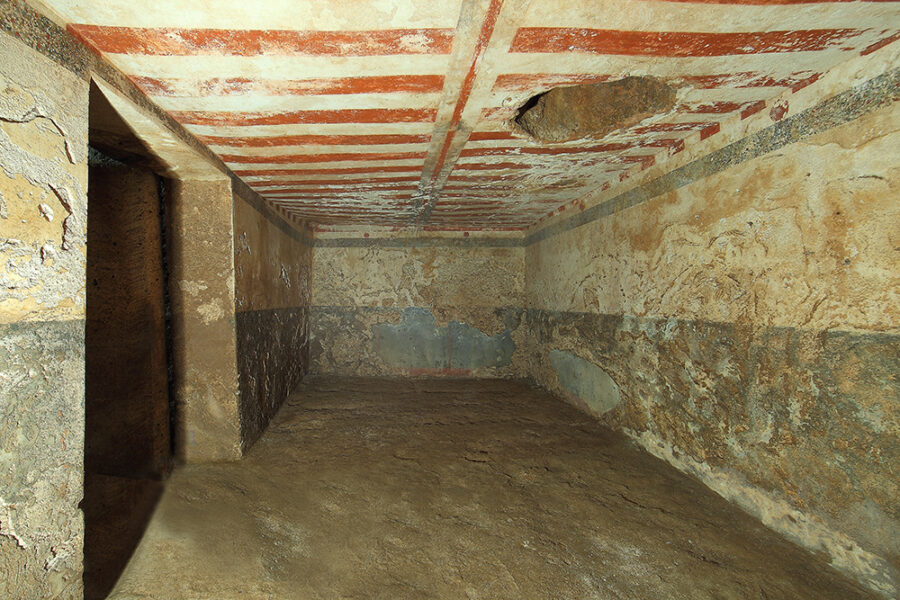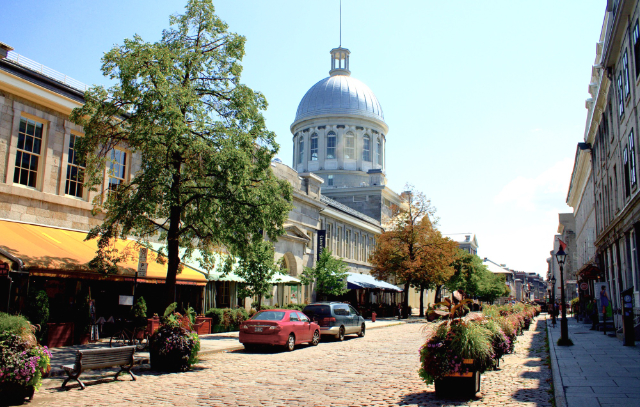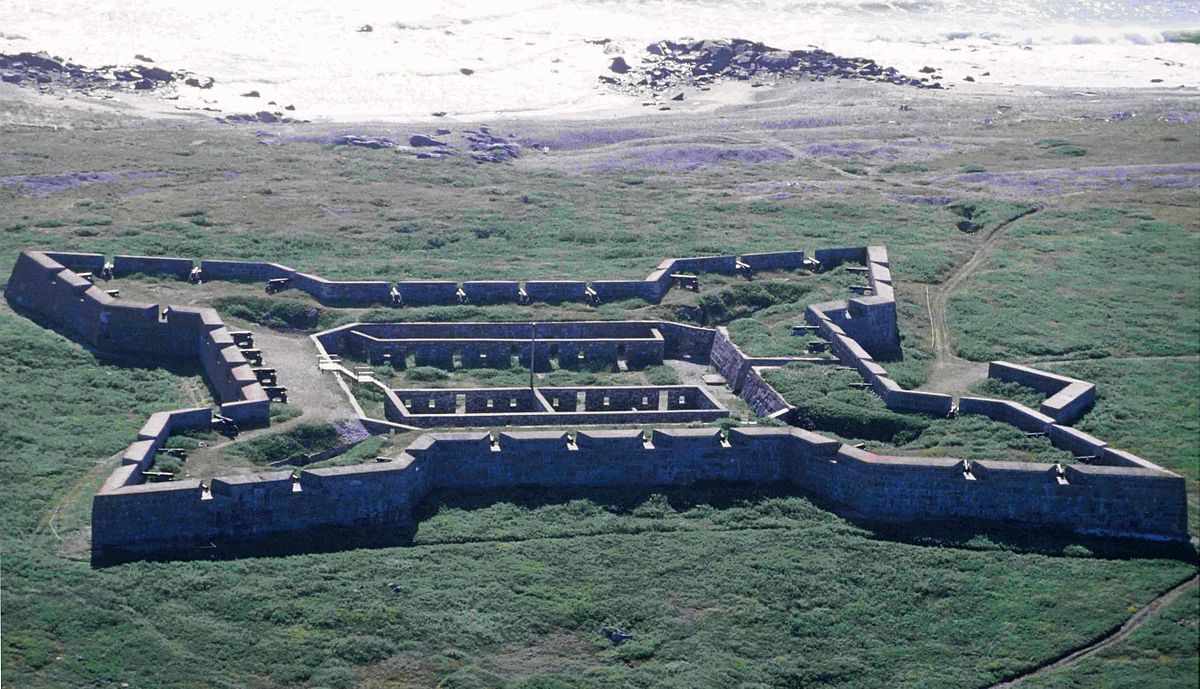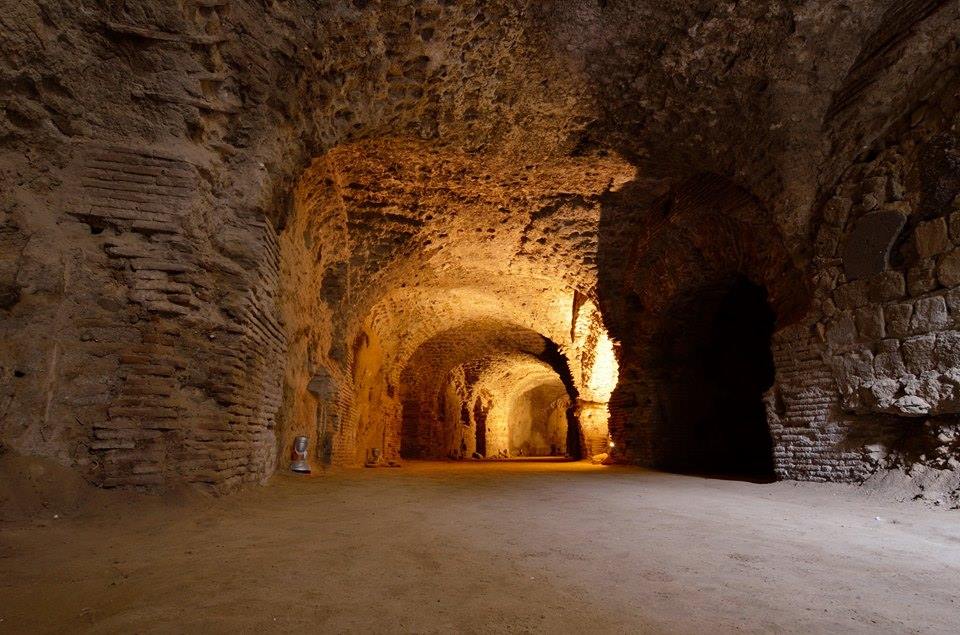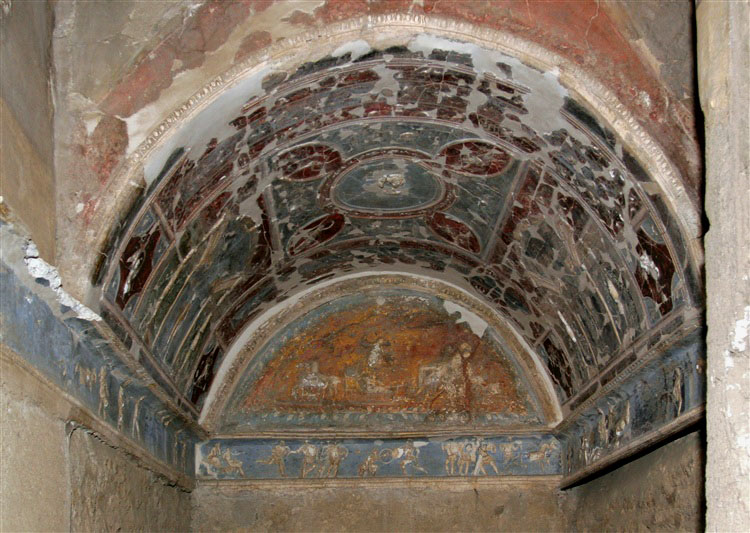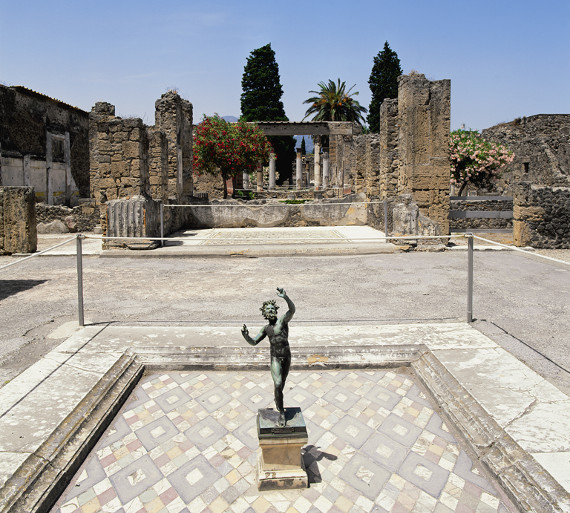Among the chamber tombs, great interest was aroused by the discovery of the Tomb of Pomegranates, which took place in 1971 during the construction of the foundations of the Museum. A flight of steps carved into the rock and a vestibule lead to the underground burial chamber: the extraordinary entrance door, still in perfect working order today, consists of two monolithic doors with a recessed handle. The name of the tomb derives from the presence of pomegranates, symbol of the afterlife, frescoed in the upper part of the walls of the tomb. Below are plant motifs with ivy branches interspersed with palmettes. The ceiling decoration reproduces the typical architecture of Roman houses: the red bands, for example, simulate a double-sloping roof with wooden beams.
